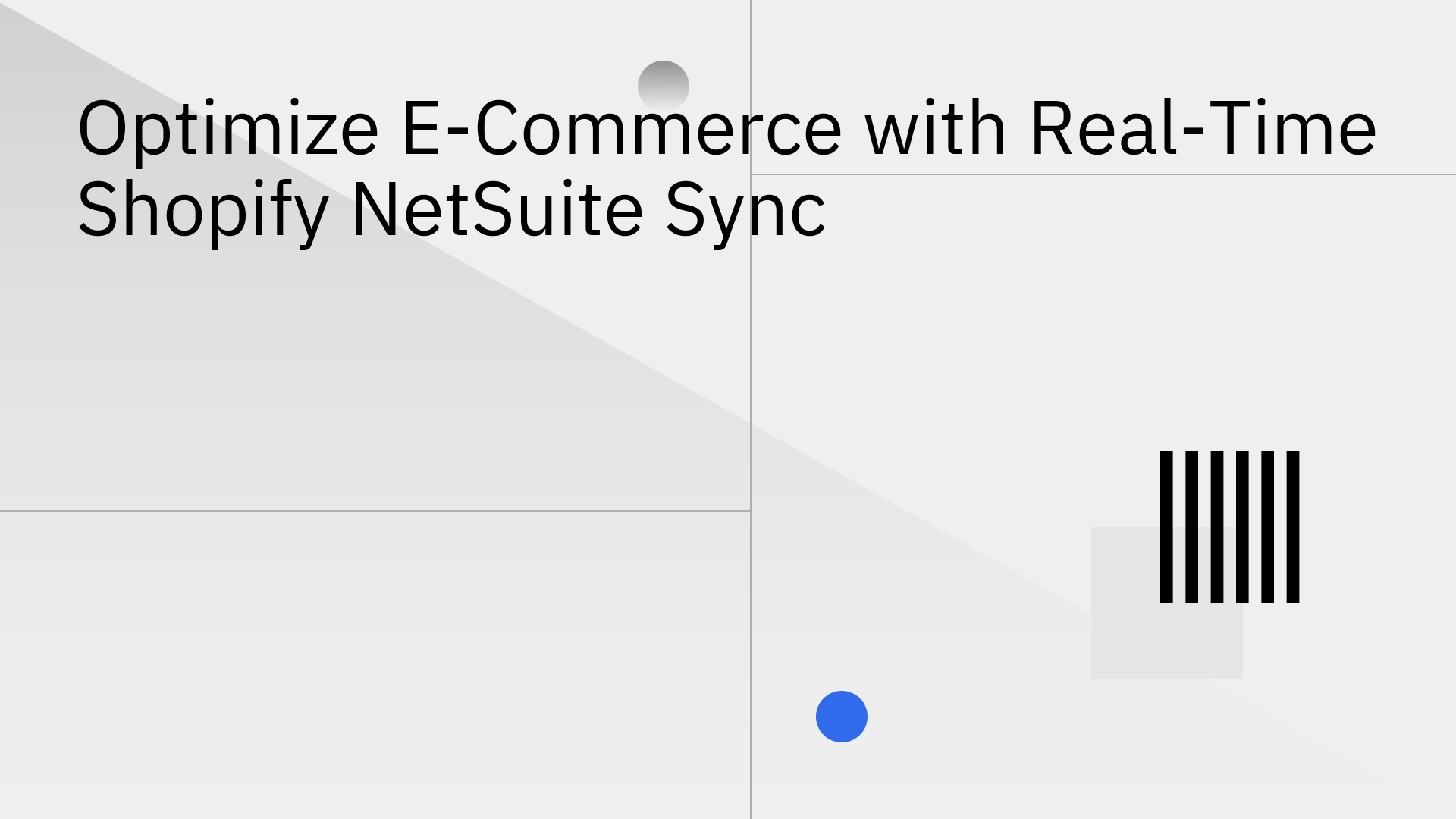
For e-commerce businesses operating at scale, using Shopify for the storefront and NetSuite as the ERP system presents a critical operational challenge: maintaining data consistency between two disparate systems. Disconnected platforms lead to manual data entry, synchronization delays, and data silos. These inefficiencies manifest as costly problems, including overselling popular products, inaccurate inventory levels, delayed order fulfillment, and a fragmented customer experience. Ultimately, these issues hinder growth, erode customer trust, and strain operational resources.
Traditional approaches to connect NetSuite with Shopify, such as developing custom code or using generic iPaaS platforms, often fail to resolve these core problems. Custom integrations are brittle, expensive to maintain, and lack scalability. Generic iPaaS tools introduce latency and complexity, struggling to handle the real-time, bi-directional data flows required for modern e-commerce.
Stacksync provides a purpose-built solution engineered to solve this specific problem. It delivers a reliable, real-time, and truly bi-directional NetSuite Shopify integration, ensuring your operational systems are perfectly synchronized with your e-commerce front end.
A high-performance integration automates critical data flows, creating a single source of truth between your e-commerce platform and your ERP. This eliminates manual work and provides the operational control necessary to scale effectively.
When a customer places an order on Shopify, the data must be instantly and accurately created in NetSuite to trigger fulfillment. Stacksync automates this entire workflow. It syncs new orders and customer data from Shopify to NetSuite in milliseconds and pushes fulfillment details, tracking numbers, cancellations, and refunds from NetSuite back to Shopify. This bi-directional flow ensures both systems are always current, providing internal teams and customers with accurate, up-to-the-minute order status information [1].
Overselling is a direct consequence of latency in inventory updates. A manual process or a slow integration cannot keep up with rapid sales velocity, leading to stockouts and canceled orders. A proper NetSuite Shopify integration automates inventory synchronization, updating stock levels on Shopify in real-time as they change in NetSuite [2]. Stacksync’s low-latency architecture ensures that as soon as inventory is adjusted in NetSuite—whether from a sale, return, or new stock arrival—the change is reflected on your Shopify storefront instantly, preventing overselling and improving customer satisfaction.
Maintaining consistency for product catalogs, especially with complex pricing structures or frequent updates, is a significant challenge. The integration should automate the synchronization of product information, including SKUs, descriptions, images, and pricing tiers, from NetSuite to Shopify [3]. This ensures that product listings are always accurate across all sales channels, eliminating pricing discrepancies and manual update errors.
Automating the flow of financial data is essential for accurate reporting and efficient cash flow management. A dedicated connector can automatically sync payout reports, sales data, tax information, and refunds from Shopify directly into NetSuite’s accounting modules [4]. This streamlines financial reconciliation, reduces the risk of human error, and provides a clear, real-time view of business performance.
Implementing a dedicated integration solution like Stacksync moves a business from reactive problem-solving to proactive, efficient operations. The benefits are both technical and strategic.
Choosing the right method to connect NetSuite with Shopify has long-term implications for cost, reliability, and scalability.
A NetSuite Shopify integration is the process of connecting a Shopify e-commerce store with a NetSuite ERP system. This connection automates the bi-directional flow of critical business data, including orders, customer information, inventory levels, product details, and financial data, to ensure both platforms operate from a single, consistent dataset.
Real-time synchronization is critical because it directly impacts customer experience and operational efficiency. With millisecond-level data updates, businesses can prevent overselling by displaying accurate inventory, provide immediate order confirmations, and accelerate the fulfillment process. This level of responsiveness is not possible with batch-based or high-latency integrations.
Standard connectors or generic iPaaS solutions often operate on schedules (e.g., every 15 minutes), creating data lags. Stacksync is purpose-built for real-time, bi-directional synchronization. It offers superior reliability with advanced error handling and conflict resolution to prevent common issues like silent sync failures. Its no-code interface simplifies setup, while its architecture is designed for the high-volume, mission-critical demands of e-commerce.
Stacksync is designed for efficiency and ease of use. The platform features a no-code, guided setup process that allows businesses to establish a robust connection between Shopify and NetSuite without requiring extensive developer resources or custom coding. This significantly reduces implementation time and cost compared to traditional methods.